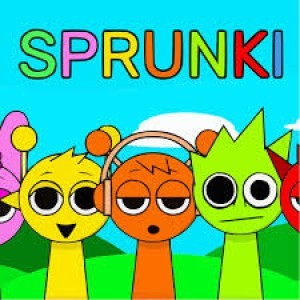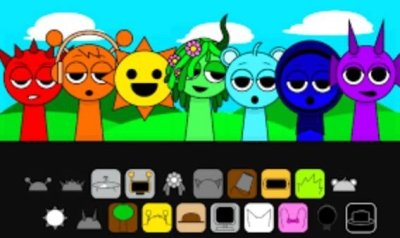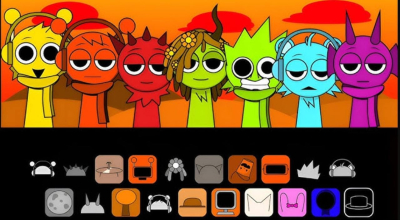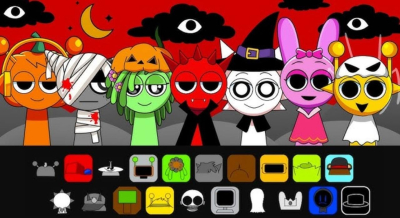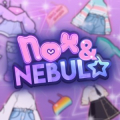Incredibox Sprunki
I remember the moment I first encountered Incredibox Sprunki vividly. I was browsing through creative music applications when I stumbled upon this colorful and vibrant platform. My curiosity was instantly piqued by its playful interface and promise of crafting unique musical creations. I approached it with open-minded excitement, eager to dive into an experience that blended technology and music in a way that felt both innovative and intuitive.
Exploring the Interactive Musical Playground
Once I started interacting with Sprunki, I was immediately drawn into its interactive musical playground. The interface itself seemed to beckon me, inviting me to experiment with various elements to compose beats and rhythms. Every tap and drag had an immediate auditory response, creating an environment where my musical intuition could freely explore different combinations and variations. I relished in the freedom to experiment, whether it was layering sounds or adjusting rhythms to match my mood.
Delving into Gameplay Mechanics and User Engagement
The way Sprunki structures its gameplay mechanics is both innovative and engaging. Navigating through the different sound modules became an adventure as I discovered new layers of rhythm and melody that I could combine in countless ways. The responsive feedback system ensured that every interaction was rewarding. I was particularly impressed by the balance between challenge and creativity the game offered, as it encouraged me not just to follow preset patterns, but to dive into my own creative instincts. The subtle hints provided at critical moments helped guide my exploration without ever feeling intrusive.
Savoring the Aesthetic Appeal and Visual Design
The aesthetic elements of Sprunki played a significant role in crafting my overall experience. The design is vibrant yet minimalistic, allowing the user to focus on the rhythmic patterns without being overwhelmed. Every animation is carefully planned and executed, providing visual harmony that complements the sounds. I noticed that the color palette and moving graphics synchronized beautifully with the beats and melodies, creating an immersive audiovisual experience. The intentional simplicity in design made the platform not only visually appealing but also user-friendly, inviting repeated visits and prolonged experimentation.
Immersing in the Auditory Landscape
Listening to the intricate layers of sound in Sprunki was like stepping into a new world. The application offers a rich collection of vocal loops, instrumental sounds, and digital effects that I could mix and match with ease. Each element seemed to have its own personality, and when combined, they produced harmonies that were both unexpected and delightful. I found myself returning to the app during quiet evenings, eager to lose myself in a personal exploration of sound, where each session unveiled new auditory nuances that made the journey exciting every time.
Experimenting with Creative Sound Engineering
One of the aspects that struck me most was the level of creative freedom offered by Sprunki. Unlike traditional music creation software, Sprunki simplifies the process without stripping away the complexity of sound engineering. I was able to manipulate different tracks by simply tapping on intuitive controls. The platform encourages users like me to experiment with unconventional combinations, leading to new and refreshing compositions that often surprised me with their depth and originality. This approach to creative sound engineering reinforces the idea that art can emerge naturally when given the right tools and environment.
Engaging with The Dynamic Interface
The dynamic interface of Sprunki is designed to foster continuous exploration and experimentation. My experience felt less like a linear progression and more like an open-ended journey where I could shape the outcome based on my interactions. Whether I was looping a specific sequence or layering additional sound effects, every gesture contributed to a musical narrative that felt uniquely personalized. The seamless integration of graphical cues and interactive elements ensured that I remained engaged throughout, leading to hours of delightful discovery and experimentation.
Manipulating Rhythm and Beats with Ease
Sprunki excels in enabling users to manipulate rhythms and beats effortlessly. The intuitive layout provided clear paths for me to modify tempo, adjust timing, or experiment with syncopation. I especially appreciated how the system maintained a balance between structured rhythm sections and spontaneous improvisation. The visual representation of beats and tempos aided my comprehension of how even the smallest adjustments affected the overall flow of the composition. It was gratifying to witness the impact of my choices translate directly into the music, making each session a meaningful dialogue between my creativity and the digital interface.
Customizing Unique Sound Layers and Patterns
Pros 
- Vibrant and intuitive interface that encourages creative exploration
- Immediate auditory feedback that enriches the user experience
- Wide range of customizable sound modules and vocal loops that allow for diverse musical compositions
- Seamless integration of visual and auditory elements that enhances overall engagement
- Innovative gameplay mechanics that balance structured patterns with spontaneous creativity
Cons 
- Limited advanced features for professional-level sound manipulation
- Some repetitive sound elements can reduce variety during extended sessions
- Occasional software glitches that may disrupt the creative process
What keeps me coming back to Sprunki is the endless possibility for customization. The platform allowed me to define and manipulate unique sound layers that could be rearranged to create a variety of musical patterns. I felt empowered by the ability to set the mood—whether I desired an upbeat track full of energy or a more relaxed, ambient composition. Each sound layer is a tool in my creative arsenal, and the ease with which I can combine them lent a sense of mastery over my musical craft. The process of remixing established patterns to forge new ones was not just fun; it was deeply satisfying as well.
Appreciating the User-Centric Design Philosophy
The user-centric design philosophy of Sprunki resonated with me on multiple levels. Every aspect of the platform is crafted to be accessible without compromising on depth. I found the learning curve to be gentle enough for beginners who were stepping into the world of digital music creation, yet it maintained enough complexity to satisfy those with more advanced skills. The logical arrangement of features allowed me to explore at my own pace, ensuring that the creative process was never interrupted by confusing navigation or overly technical jargon. Every feature seemed purposefully positioned to support a smooth and enjoyable user experience.
Exploring the Versatility of Musical Expression
Sprunki opened my eyes to the versatility of musical expression. Over time, I began experimenting with combinations that spanned multiple genres and styles, something I had not attempted in other music applications before. The platform’s design encourages users to push boundaries and venture into new territories of rhythm and sound. I vividly recall a session where my spontaneous experimentation led me to discover a blend of electronic beats with subtle acoustic undertones—a union that surprised me with its complexity and emotional depth. This ability to combine disparate musical elements made every session a journey of discovery and self-expression.
Embracing the Role of an Innovative Composer
Using Sprunki, I often felt that I was stepping into the role of an innovative composer. The platform's versatility allowed me to merge traditional rhythmic patterns with modern digital sounds, giving rise to compositions that were both nostalgic and futuristic. I enjoyed the opportunity to explore music beyond the limitations of conventional composition software. The intuitive controls invited me to bend and reshape sound in ways that felt both daring and methodical, and with that, I was able to craft pieces that were entirely my own.
Venturing into New Dimensions of Digital Sound
My ongoing journey with Sprunki has been an exploration into new dimensions of digital sound that I had not previously imagined. The application continually evolved with each session, offering fresh surprises through updated sound libraries and interactive features. The experience felt akin to navigating a digital soundscape where every turn presented an opportunity to discover hidden layers of musical creativity. I reveled in the novelty of each sound element, appreciating not just the auditory output but also the thoughtful details behind each design decision that contributed to an overall cohesive experience.
Crafting a Personal Musical Odyssey
Every session with Incredibox Sprunki has been a personal musical odyssey where I carved out my own narrative with sound. The toolset provided by the platform allowed me to create tracks that reflected different facets of my mood and creative impulses. As I built complex layers of sound, I could tell a story that was entirely my own using a digital canvas. The engaging interface, combined with deep creative possibilities, turned each interaction into a chance to convey feelings and concepts beyond the limits of conventional music composition techniques.
Reflecting on My Ongoing Relationship with Sprunki
Throughout my time using Incredibox Sprunki, I have continually found that it is much more than just an entertaining app—it is a companion in my creative journey. Each time I return, there is a sense of anticipation for what new musical ideas might emerge. I have often marveled at how technology can bridge the gap between structured musical theory and spontaneous creative expression. The fluidity of the tool has allowed me to capture moments of inspiration that otherwise might have passed unnoticed. By offering both a playful environment and a rich set of functionalities, Sprunki has nurtured my evolving relationship with digital music creation.










